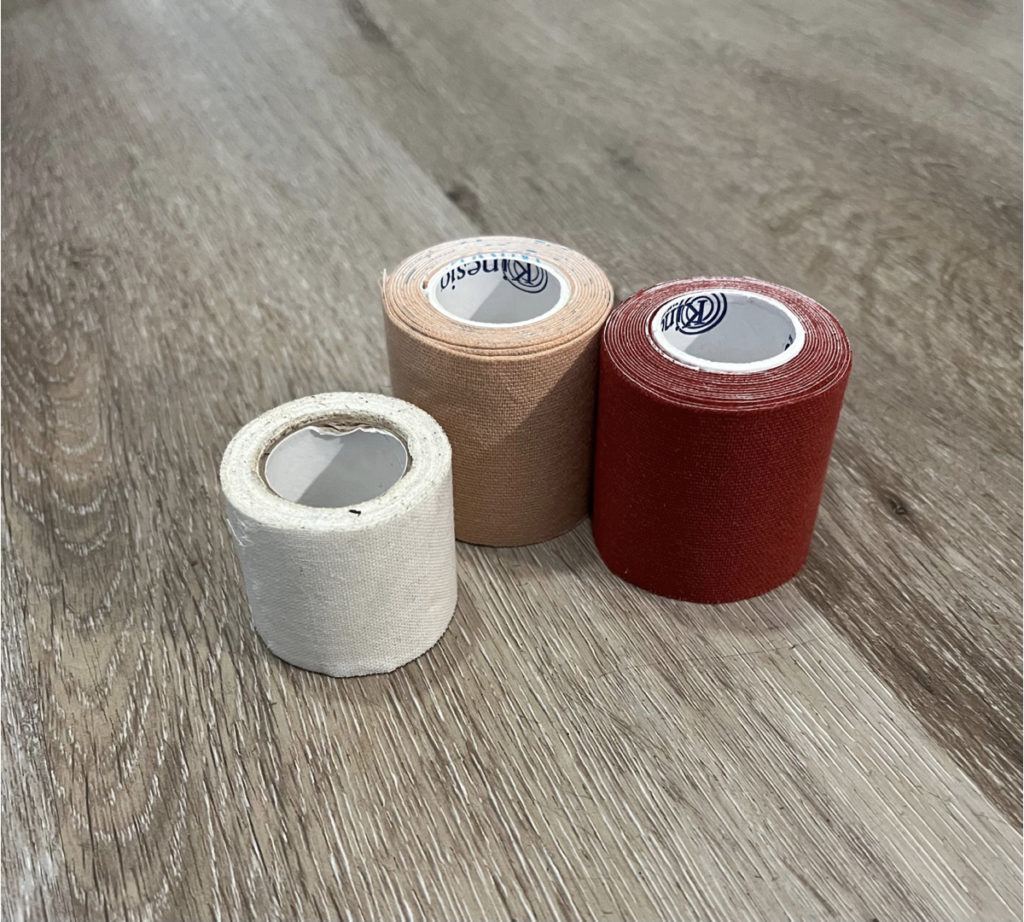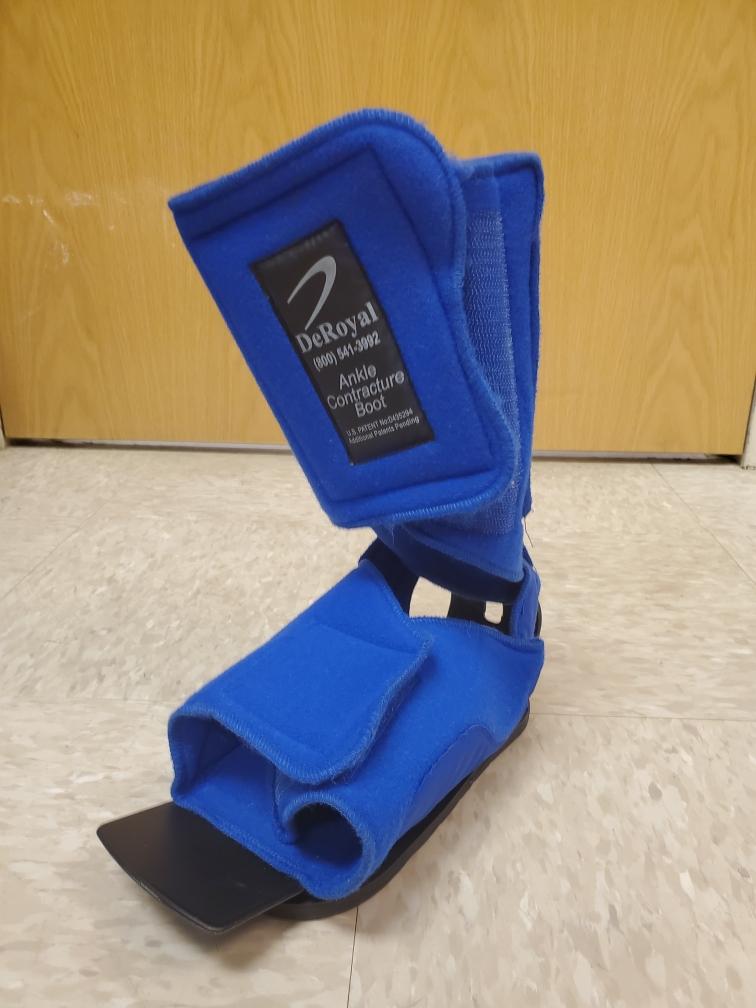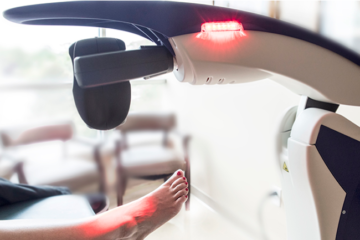Do you have any heel or sole pain at the first step after waking up or after walking for a long distance? If so, you might have plantar fasciitis. Plantar fasciitis is an inflammatory response within the plantar fascia. It is one of the most common causes of the heel pain. A wide range of population from high level athletes to sedentary workers suffer from heel pain caused by plantar fasciitis. In this blog, I would like to introduce the recent evidence and the general treatment plans for the plantar fasciitis.

What is plantar fascia?
Plantar fascia is a thick and strong fascial structure found in the superficial surface of the sole under the skin. This structure is not a tendon nor muscle, but it plays an important role in walking/running for a shock absorption and a force production with its own stretching and shortening capacity. It covers a whole foot from the heel to the base of the toes, then it emerges into the tendons of the toes. Plantar fascia gets taut when you bring your toes up, and it gets slack when you point your toes down. During walking, tension of the plantar fascia helps to enhance the whole foot stability while putting our weight on our feet.



Plantar fascia has no function to change its length by itself. In other word, other muscles and joint motions are necessary to change tension of the plantar fascia. Deeper to the plantar fascia, a lot of muscles within the foot attach to it. A part of the Achilles tendon also reaches to the plantar fascia through the sheath superficial to the heel bone (interesting!!). These structural connections are the hints of the treatment options for plantar fasciitis (i.g., stretching calf muscles or foot muscle strengthening).
*The left picture shows how the Achilles tendon is connected to the plantar fascia through the sheath superficial to the heel bone. The right picture shows foot intrinsic muscles located underneath the plantar fascia.
Symptoms of plantar fasciitis
As I mentioned above, plantar fasciitis is an inflammatory condition of the plantar fascia. When mechanical stress is applied to it, such as stretching, irritable plantar fascia feels pain. People with plantar fasciitis typically experience sharp pain in heel or sole with initial steps after a period of inactivity such as sitting or sleeping. Pain at the first step when getting off the bed is one of the most common symptoms because we naturally put our feet in shortened position for the plantar fascia (pointing toes down in the bed). Then, the initial steps which stretch plantar fascia in the morning cause sharp pain. People also feel pain when they walk for a long period of time due to repetitive pressure on the plantar fascia. The pain often lasts for more than 3 months, but 80% of people relieve symptoms within a year.


While you sleep, toes are pointing down, meaning the plantar fascia is in the shortened position.
Night splint helps to keep the plantar fascia stretched while you sleep, so you would not feel sharp pain in the morning.
Risk factors of plantar fasciitis
Evidence indicates several factors that increase a risk of plantar fasciitis. Recent increase in activity level, tight ankle, high BMI, and either high or low medial longitudinal arch are the risk factors according to the research of plantar fasciitis. Approaching these factors can be effective to prevent from having heel pain or reducing pain caused by plantar fasciitis.
Recent increase in activity level
If you increase your activity level within a short period of time, your body will not adapt the change in activity level, then you will have pain in your body (not necessarily in your heel). You may have symptoms in your knees, low back, or feet. If you want to start regular exercise, I recommend gradual increase in training intensity.
Example of exercise program:
Week 1: jogging 6mph for 20 mins 3/week
Week 2: jogging 6mph for 25 mins 4/week
Week 3: jogging 7mph for 20 mins 4/week
Tight ankle
The most common reason to have a tight ankle is a presence of tight calf muscles. Physical therapists often prescribe patients with calf stretching for plantar fasciitis symptoms because tight calf muscles pull the plantar fascia into the shortened position. Removing calf tightness would help to reduce the stress on the plantar fascia.
High BMI
As you can imagine, heavy weight causes more stress on our entire body. One of the roles of plantar fascia is to support our weight in standing position. As you gain more weight, you would put more stress on the plantar fascia. Losing weight is one of the options to prevent from plantar fasciitis.
Medial longitudinal arch
Medial longitudinal arch is composed of bones and muscles on the inside of our foot. Dropped or raised medial longitudinal arch is caused by countless numbers of reasons; weak foot muscles, tight ankle, poor hip and trunk control in standing, tight hip joint, thoracic scoliosis, or even neck tightness. It is hard to tell what exactly causes the change in your medial arch height, so you need to see a physical therapist to find out what causes it. If you have heel pain and you think you have flat feet or high arch, I recommend to go to see a physical therapist.
Treatment for plantar fasciitis
In addition to treating the risk factors that I mentioned in the previous section, physical therapists often provide treatments which directly help to reduce symptoms. Treatment guideline for plantar fasciitis suggests doing, manual therapy, stretching, taping/orthosis/night splints, activity modification, and some modalities. The guideline suggests that plantar fasciitis patients should receive multiple types of interventions to improve symptoms.
Manual Therapy
Manual therapy performed by physical therapists on foot and calf muscles may decrease the symptoms. Go visit PT!


Stretching
Calf stretching is effective to plantar fasciitis. However, one research showed that stretching specifically focusing on plantar fascia (stretching toes) is more effective than calf stretching. If you have plantar fasciitis, you should try stretching both calf and toes.
Taping:
Taping to support medial arch may help to reduce the heel pain. Calf muscle support tape is also effective.


Foot orthosis/night splints
Foot orthosis and night splints put the plantar fascia in stretched position. This lengthens the plantar fascia, and you may feel less pain. If you have symptoms with prolonged activity, you may benefit from daytime orthosis. If you have symptoms with initial steps in the morning, you may benefit from night splints.
Modalities
Effects of Extracorporeal Shock Wave Therapy (ESWT) and corticosteroid shot are controversial. That means, they sometimes work well, and sometimes do not. Research showed that standard treatment (the treatments mentioned above) was better than ESWT for plantar fasciitis. It says physical therapists may use ESWT when other interventions are not effective. Corticosteroid shot has some side effects, such as heel fat pat (shock absorber) atrophy, plantar fascia rupture, change in skin integrity, and nerve and muscle damage. You will need to discuss the benefits and drawbacks of these modalities with your doctor or a therapist.

MLS® Laser Therapy
The innovative and patented Multiwave Locked System (MLS) Therapy Laser was
developed in an effort to produce an efficient and simultaneous effect on pain, inflammation, and edema, exceeding the limits of traditional LLLT (low power) and concerns of HP (high power) laser therapy.
An energetic synergy is created when delivering these wavelengths that produces greater anti-inflammatory and analgesic effects than either can produce on its own, while minimizing the risk of thermal damage.
It is this unique combination and synchronization of continuous and pulsed emissions that characterizes MLS and distinguishes it from other Class IV lasers.
Conclusion
I introduced the basic information and treatment plans for plantar fasciitis. As I explained, combination of manual therapy and exercise therapy is the most effective to remove pain. Also, if you have heel pain, I recommend you go to see a doctor or a physical therapist. You may have different diagnosis such as tarsal tunnel syndrome, Achilles tendinitis, or neural symptoms caused by spinal stenosis. Physical therapists may give you different treatment plans from what I mentioned here because each person has different physical problems, such as poor posture, weak core muscles, tight hamstrings, or all of them. Please do not hesitate to see a physical therapist so you can find your own problems.
Reference
- Stecco, Carla., Corradin, Marco., Macchi, Veronica., et al. Plantar fascia anatomy and its relationship with Achilles tendon and paratenon. J Anat. 2013;223(6):885-76.
- Martin, RL., Davenport, TE., Reischi, SF., et al. Heep pain – plantar fasciitis: revision 2014. J Orthop Sports Phys Ther. 2014;44(11)A1-33.
- Netter, FH. Atlas of Human Anatomy. 6th edition. 2014


